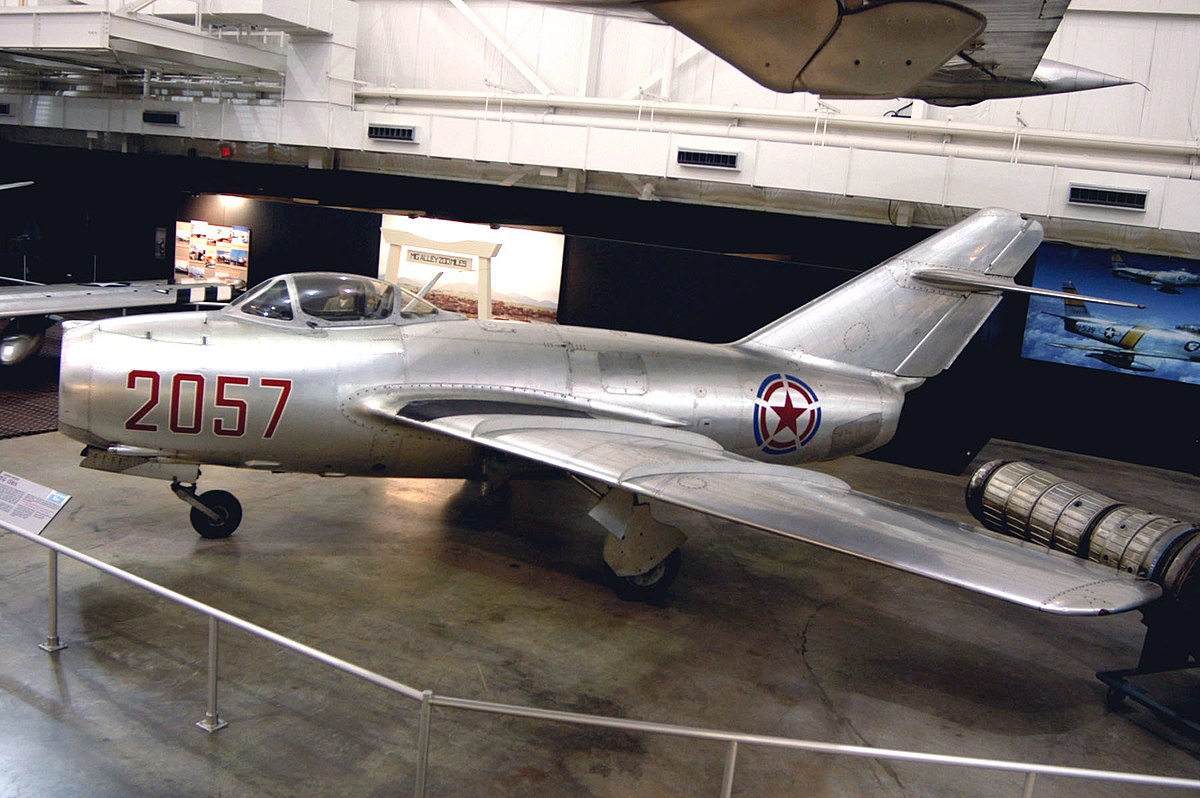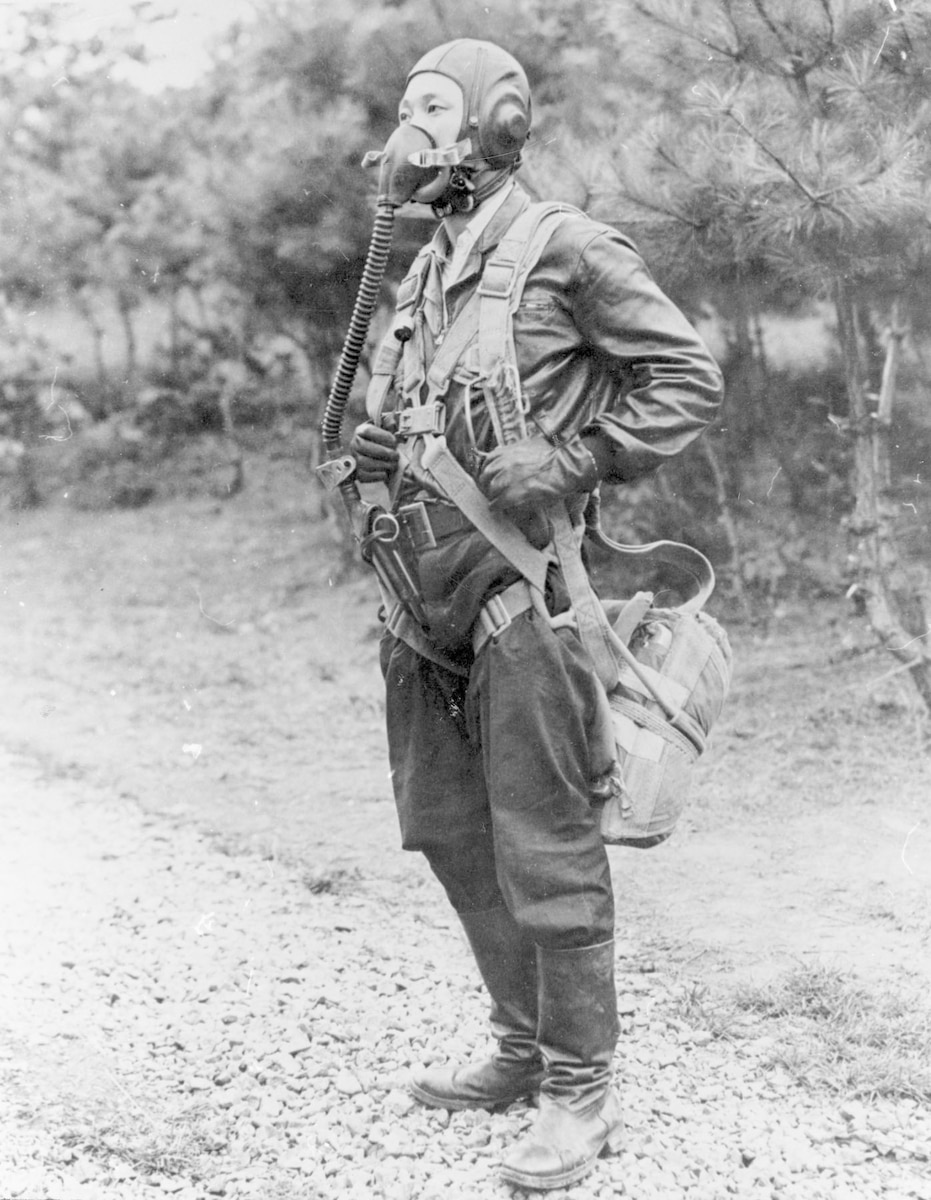During the Korean War, the United States faced an unexpected challenge. Their newest fighter jet, the F-86 Sabre, which was lauded as the most advanced fighter of its time, was consistently outmatched by a small yet formidable Soviet-built jet: the MiG-15.
These agile MiG-15 Soviet fighters, flown by Russian, North Korean, and Chinese pilots, were proving a significant threat to US air superiority. They demonstrated superior maneuverability and firepower, which American pilots struggled to counter.
The situation was so dire that the United States devised a bold plan to acquire the MiG-15 and understand its technology.
The MiG-15 first appeared over the Korean skies in late 1950, with Soviet pilots secretly flying combat missions to aid North Korea. This intervention came after the North Koreans, struggling against the relentless aerial bombardment from US, British, and Australian forces, sought help from their allies.
Soviet leader Joseph Stalin, wary of direct involvement that might provoke another global conflict, had initially refrained from entering the war.
However, the threat of UN forces overrunning the Korean Peninsula and the inadequacy of Chinese pilots led Stalin to commit Soviet air support.
China’s Plan To Exploit ‘NATO Loophole’ In Svalbard Busted; Arctic Region Becomes Hotbed Of Rivalry
In the ensuing air battles, the MiG-15 quickly established its dominance. On November 1, 1950, in the first clash between Soviet and American jets, the MiG-15 shot down at least one US Mustang without suffering any losses.
These early successes marked the end of American air supremacy over Korea, as recounted by former Soviet fighter pilot Sergei Kramarenko in his memoir, “Air Combat Over the Eastern Front and Korea.”
In the skies above the Korean Peninsula, seasoned Soviet pilots, veterans of World War II, engaged in dogfights with their American counterparts, often emerging victorious.
The MiG-15’s superiority was evident, particularly at higher altitudes, where it outperformed US jet fighters like the F-80 and F-84 and even challenged the F-86 Sabre.
The MiG-15: The Jet That Stunned the West
The MiG-15, a Soviet-built fighter jet, was critical to asserting Soviet dominance over the skies during the Korean War. Its advanced capabilities allowed Russian pilots to outmaneuver their Western counterparts, especially those flying the United States’ latest aircraft, the F-86 Sabre.
One key advantage the MiG-15 held over Western fighters was its ability to reach higher altitudes. With a service ceiling of over 50,000 feet, MiG-15 pilots could easily climb to heights that the F-86 Sabre and other Western aircraft could not reach, providing a haven from enemy fire and a tactical advantage in combat.
Along with its altitude advantage, the MiG-15 also featured remarkable speed and acceleration, outpacing the F-86 Sabre’s performance. The MiG could achieve a maximum speed of 1,005 km/h, slightly faster than the Sabre’s 972 km/h.
This speed, combined with its climbing rate of 9,200 feet per minute (compared to the F-86’s 7,200 feet per minute), allowed the MiG-15 to outmaneuver and evade Western jets in dogfights.
The ability to quickly ascend, combined with superior speed, meant that MiG-15 pilots could dictate the terms of engagement, choosing when to engage in combat and when to retreat.

A crucial aspect of the MiG-15’s dominance was its armament. Unlike the American B-29 bombers, which were equipped with machine guns effective up to 400 meters, the MiG-15 was armed with powerful cannons capable of hitting targets from a distance of 1,000 meters.
This disparity in firepower meant that MiG-15 pilots could strike from beyond the reach of the B-29s’ defenses. Former Soviet fighter pilot Sergei Kramarenko highlighted this tactical advantage, noting that the MiGs could destroy bombers while remaining safely out of the range of the bombers’ machine guns.
This design flaw made the American bombers susceptible to the formidable cannons of the MiG-15, resulting in considerable losses. The devastating firepower of the MiG-15’s cannons was matched by the effectiveness of its ammunition.
The high-explosive bullets fired by the MiG-15 could create holes approximately one square meter in size on enemy aircraft, often causing irreparable damage.
Even if pilots were able to make it back to base after being hit, their aircraft were often too damaged to fly again. In contrast, the MiG-15’s construction and thicker skin allowed it to endure substantial damage and still return to base, giving it a resilience that further contributed to its effectiveness in combat.
The MiG-15’s impact on the Korean War was profound. Retired US Air Force Lieutenant General Charles “Chick” Cleveland remarked that the MiG-15 achieved what German fighters like the Focke-Wulf and Messerschmitt could not during World War II: driving out the US bomber force from the skies.
The Korean War saw some of the most intense and thrilling dogfights in the history of modern air combat, with many of these encounters occurring in a region known as “MiG Alley.”
This area, located in the northwestern part of North Korea, where the Yalu River meets the Yellow Sea, became infamous as the site of numerous air battles between Soviet MiG-15s and American F-86 Sabres.
One of the most disastrous days for the US Air Force came on October 23, 1951, now known as Black Tuesday. On this day, Soviet MiGs intercepted and shot down six out of nine B-29 Superfortress bombers.
MiG-15 pilot Porfiriy Ovsyannikov recalled the confusion these encounters caused, stating, “When they fired at us, they smoked, and you think, ‘Is the bomber burning, or is it machine gun smoke?’”
Despite the B-29’s reputation for good defensive capabilities, MiG pilots could engage from distances that left the bombers virtually defenseless.
The MiG-15’s effectiveness was such that Russian pilots derisively nicknamed the B-29s “Flying Shacks,” a reference to their vulnerability and the ease with which they could be set ablaze.
Lt. Col. Earl McGill, a former USAF pilot, described the impact of Black Tuesday in his book, “Black Tuesday Over Namsi: B-29s vs MiGs”. He noted that the losses on this single mission represented the highest percentage loss for any major bombing mission in US military history.
The lessons learned from this confrontation fundamentally altered the US Air Force’s approach to strategic aerial bombardment.
No longer would B-29s conduct daytime bombing runs into MiG Alley. This shift in strategy also spared many North Korean towns and villages from the devastating carpet-bombing and napalm attacks that had previously inflicted heavy civilian casualties.
Meanwhile, Chinese and North Korean pilots also flew combat missions in MiG-15s, but their skills did not match those of their Soviet counterparts, leading to the loss of many MiG-15s. Despite this, the aircraft remained a significant threat to US forces.
Recognizing the need to understand the MiG-15’s capabilities, the United States resorted to a classic Cold War strategy: the offer of financial reward. The Americans promised a substantial sum of money to any pilot who would defect with a MiG-15.
This incentive eventually bore fruit in 1953.

How The US Finally Snagged A MiG-15?
The United Nations forces, especially the US Air Force, were struggling against the Soviet-built MiG-15 fighters during the Korean War. To gain an advantage, the US sought to study a MiG-15 firsthand, leading to the launch of Operation Moolah, a plan designed to encourage defections.
On April 26 and 27, 1953, a group of US bombers flew over North Korea, not with bombs but with a different kind of payload: over a million leaflets written in Russian, Chinese, and Korean.
These leaflets promised a monetary reward to any Communist pilot who defected with a MiG-15 or other Soviet-made jet. The first pilot to do so would receive a $100,000 bonus.
Additionally, all defectors with jets were assured a base reward, political asylum, resettlement in a non-Communist country, and anonymity if desired.
The operation had a mixed impact. After the leaflets were dropped, sightings of MiG-15s became less frequent. An American general noted that the initial reaction from the Communist side was to ground all MiGs for eight days.

Meanwhile, North Korean leader Kim Il-sung responded to the leaflets by urging his pilots to remain vigilant and protect their aircraft. However, the war ended without any pilots defecting.
Then, on September 21, 1953, just seven weeks after the armistice, an unexpected event occurred. A MiG-15bis, a more advanced version of the original MiG-15, landed at Kimpo Air Base near Seoul, South Korea, catching everyone by surprise.
The aircraft was piloted by 21-year-old Senior Lieutenant No Kum-Sok of the North Korean Air Force, who had long planned to escape to South Korea.
The flight from North Korea to Kimpo Air Base took just 17 minutes, with the MiG-15 hitting 620 MPH (998 km/h). The North Korean pilot encountered no interceptions due to the radar at Kimpo being down for maintenance.
However, Lt. No Kum-Sok landed his jet from the opposite direction, nearly colliding with an F-86 Sabre. US officials noted that he would have been shot down if he had landed correctly. After landing, No Kum-Sok parked between two Sabre jets and tore up a picture of Kim Il-sung.
The North Korean asserted that he was unaware of the reward and fled solely out of his motivation. No later received about the $100,000 reward from Operation Moolah. He was also relieved to discover that his mother had been safely evacuated to South Korea in 1951.

The captured MiG-15bis was transported to Okinawa, where US test pilots, including Capt. H.E. “Tom” Collins and Maj. C.E. “Chuck” Yeager conducted test flights.
Later, the aircraft was disassembled, shipped to Wright-Patterson Air Force Base in December 1953, reassembled, and subjected to extensive flight tests. Despite the US offering to return the aircraft to its rightful owner, no country claimed it, and it was eventually placed in a museum in 1957.
After defecting, No Kum-Sok relocated to the United States with his mother. He changed his name to Kenneth Rowe, became a US citizen, and graduated from the University of Delaware.
Later in life, Rowe led a quieter existence as a professor of aircraft engineering at Embry-Riddle Aeronautical University, where he taught for 17 years. He spent his remaining years in the Daytona Beach area with his wife, Clara, until his death on December 26, 2022, just weeks before his 91st birthday.
- Contact the author at ashishmichel(at)gmail.com
- Follow EurAsian Times on Google News




